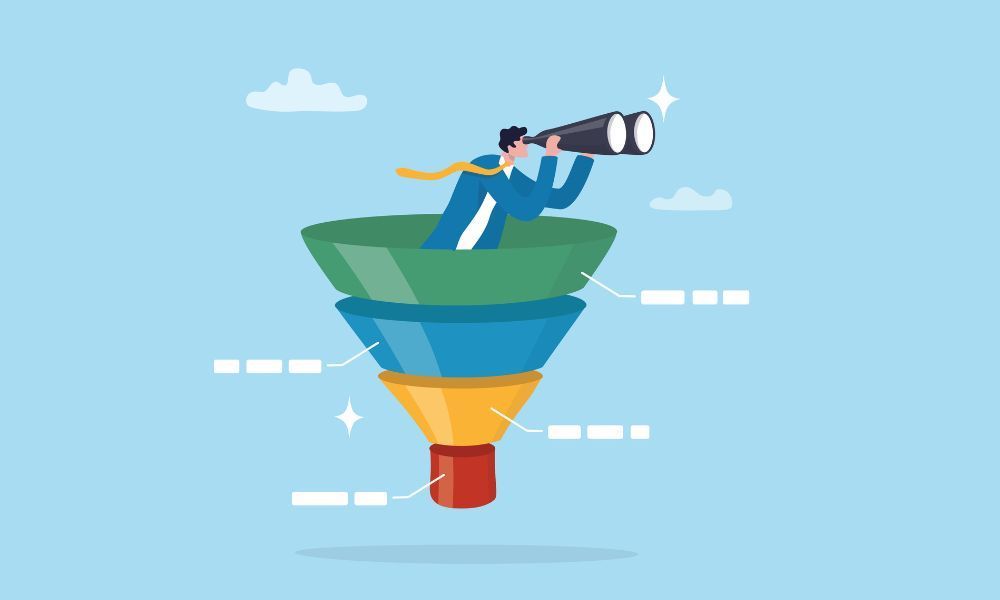Your Competitors Are Automating. You're Still Cleaning Data Manually. Here's Why That's a Problem.
The automation gap: Clean data drives faster automation, quicker iteration, and smarter scaling—while manual cleanup leaves you stuck in spreadsheet purgatory

Last quarter, I watched a marketing operations director at a $500M SaaS company spend three weeks cleaning customer data for a simple personalization campaign. Three weeks. Meanwhile, their competitor launched, tested, and optimized four campaigns using automated data cleaning tools. Guess who's winning market share?
The brutal reality? While you're manually deduping records and fixing formatting errors, your competitors are already three campaigns ahead. They're not smarter. They're not working harder. They just understood one fundamental truth: in the automation race, data quality determines velocity.
The Hidden Cost of Manual Data Management
Here's what keeps data team leaders and marketing ops professionals awake at night: you know automation is the key to scaling, but your data is too messy to automate anything meaningful. So you're stuck in an endless cycle—cleaning data to enable automation, but spending so much time cleaning that you never actually automate.
I saw this pattern repeatedly during my tenure at Novartis, where we managed data across 90 countries and 1,200+ websites. The teams that succeeded weren't the ones with the biggest budgets or the most sophisticated tools. They were the ones who automated their data hygiene processes first.
Consider the math: if your team spends just 2 hours daily on manual data cleanup (and most spend far more), that's 500 hours annually per person. At an average salary of $85,000 for a marketing ops professional, you're burning $20,000+ per employee just on data janitor work. Multiply that across your team, and you're looking at six figures spent on manual processes your competitors automated years ago.
But the real cost isn't measured in dollars—it's measured in missed opportunities.
Why Clean Data Is Your Automation Foundation
Think of data quality like the foundation of a house. You can't build a second story on a cracked foundation. Similarly, you can't build sophisticated automation on dirty data. Every manual data fix is a crack in that foundation, and every crack slows down everything you try to build on top.
When I led the digital transformation at BestReviews, we increased organic traffic revenue by 28% in just 8 months. The secret? We didn't start with fancy AI tools or complex algorithms. We started by implementing automated data cleaning processes that gave us consistently reliable data. Only then could we build the personalization engines and predictive models that drove results.
Clean data enables three critical automation accelerators:
- Faster Implementation Cycles: With consistently formatted, deduplicated data, what used to take weeks now takes hours. Campaign setup becomes templated. Segmentation becomes instant. Testing becomes continuous rather than sporadic.
- Reliable Iteration Loops Dirty: data creates false signals. You think a campaign failed when really your data was incomplete. Clean data gives you trustworthy feedback loops, enabling rapid iteration based on real insights, not data artifacts.
- Scalable Intelligence: AI and machine learning models are only as good as their training data. Feed them garbage, get garbage predictions. Feed them clean, structured data, and suddenly your predictive lead scoring actually predicts, your churn models actually prevent churn, and your personalization actually feels personal.
The Three Signs You're Falling Behind
After working with dozens of enterprises on their digital transformations, I've identified three clear indicators that manual data processes are killing your competitive advantage. If you recognize these symptoms, you're already behind—and the gap is widening daily.
Sign #1: Your "Quick" Campaigns Take Weeks
You know that campaign your CMO wants launched "quickly"? The one that should be simple? If it's taking more than 48 hours from concept to launch, data quality is your bottleneck.
I recently consulted with a healthcare company where a "simple" email campaign to 50,000 HCPs took six weeks to launch. Why? Three weeks to clean and verify the data, one week to get compliance approval (delayed because the data quality questions), and two weeks to actually build and test. Their competitor? Launched a similar campaign in four days using automated data validation.
When manual data cleanup becomes your critical path, every campaign becomes a marathon. Your competitors are running sprints while you're still tying your shoes.
Red flags to watch
- Data prep takes longer than campaign creative
- You're constantly discovering data issues mid-campaign
- "Let me clean up the data first" has become your team's catchphrase
Sign #2: Your Team Avoids Complex Segmentation
Here's a telling question: when was the last time your team created a truly sophisticated, multi-variable customer segment? If the answer is "we keep it simple," you're not being pragmatic—you're being limited by your data infrastructure.
Complex segmentation drives real results, but only when your data can support it. When data lives in silos, when customer records are duplicated across systems, when basic fields like industry or company size are inconsistently formatted—complex segmentation becomes a nightmare.
One pharmaceutical client I worked with wanted to segment HCPs by specialty, prescribing patterns, and digital engagement level. Simple enough, right? Except specialty data lived in three different formats across four systems. Prescribing data had 40% missing values. Digital engagement data used different identifiers than the CRM. What should have been a two-hour segmentation exercise became a two-month data archaeology project.
Meanwhile, their competitor using automated data normalization? They were already on their third iteration of AI-powered micro-segmentation, delivering personalized content to segments as small as 50 accounts.
Warning signs:
- Segments are broad and basic (industry, company size, geography)
- Advanced personalization feels "too complicated"
- You avoid multi-system data combinations
Sign #3: Your Dashboards Show Yesterday's Problems
Real-time dashboards have become table stakes in modern marketing operations. But here's the dirty secret: most "real-time" dashboards are fiction when built on manually maintained data. They're showing you yesterday's problems with today's timestamp.
During my time leading digital strategy at CT3 Education, I inherited a dashboard that claimed to show real-time campaign performance. Investigation revealed the underlying data was manually updated weekly, sometimes bi-weekly when the team was busy. Leadership was making "data-driven decisions" based on data that was already obsolete.
The modern MarTech stack demands real-time data flows. When you're manually moving data between systems, manually cleaning records, manually updating fields—you're not just slow, you're blind to what's happening right now.
Your competitors with automated data pipelines? They're seeing problems while they're still small. They're capitalizing on opportunities while they're still fresh. They're making decisions based on what's happening, not what happened.
Critical indicators:
- Dashboard data doesn't match source system data
- "The numbers will be updated tomorrow" is a common phrase
- You discover problems through customer complaints, not dashboards
The Automation-First Approach to Data Quality
The solution isn't working harder at manual data cleaning—it's eliminating manual cleaning altogether. This is where modern data quality platforms like CleanSmart fundamentally change the game.
Instead of treating data quality as a periodic project, automation-first platforms treat it as a continuous process. They don't just clean your data once; they keep it clean automatically, continuously, intelligently.
Here's how the automation-first approach transforms your operations.
Continuous Data Validation
Rather than discovering problems during campaign setup, automated platforms validate data at the point of entry. Every new record, every field update, every system sync gets validated against your business rules in real-time. Bad data never makes it into your systems in the first place.
Intelligent Deduplication
Manual deduplication is like playing whack-a-mole—you clean up duplicates, but new ones appear faster than you can merge them. Automated platforms use machine learning to identify potential duplicates across multiple fields and systems, continuously merging and maintaining single customer views without human intervention.
Automated Standardization
One of the biggest time drains I observed at Novartis was standardizing data formats across countries and systems. Company names, addresses, phone numbers—all in different formats. Automated standardization tools apply consistent formatting rules across all your data, regardless of source, ensuring compatibility across your entire stack.
Predictive Data Enrichment
Modern platforms don't just clean existing data—they intelligently fill gaps using external data sources and predictive modeling. Missing industry codes? Automatically populated. Incomplete contact information? Intelligently enriched. Your data doesn't just get cleaner; it gets more complete.
From Data Janitor to Strategic Operator
The role of marketing operations is evolving, but too many teams remain stuck in janitor mode. When you automate data quality, you transform your team's focus from maintenance to innovation.
I've seen this transformation repeatedly. Teams that previously spent 60% of their time on data cleanup suddenly have that time back for strategic work. They're building predictive models. They're designing sophisticated customer journeys. They're actually using the expensive MarTech tools gathering dust because the data was never clean enough to activate them.
One client, a mid-market B2B software company, made this shift last year. Their marketing ops team of four was spending roughly 25 hours weekly on data management. After implementing automated data quality processes:
- Campaign deployment time dropped 73%
- Segmentation complexity increased 4x
- Marketing-qualified lead volume increased 44%
- Cost per acquisition decreased 31%
But the biggest change? Their marketing ops manager told me, "We finally feel like strategists, not data janitors. We're solving business problems, not formatting problems."
Making the Business Case for Automated Data Quality
If you're convinced but need to convince others, here's how to build the business case:
Calculate Your Manual Cost
Document how much time your team spends on manual data tasks. Include:
- Data cleaning and deduplication
- Format standardization
- Cross-system data movement
- Error correction and troubleshooting
Multiply hours by loaded hourly cost. The number will shock you—and your CFO.
Quantify Opportunity Cost
For every hour spent on manual data tasks, what's not getting done? Calculate the value of:
- Delayed campaigns
- Simplified segmentation
- Avoided personalization
- Postponed testing
This is often 3-5x your manual cost.
Project Automation Impact
Based on my experience across dozens of implementations, expect:
- 70-80% reduction in data prep time
- 40-50% increase in campaign velocity
- 25-35% improvement in campaign performance
- 90% reduction in data-related errors
Your Next Steps
The gap between companies with automated data quality and those still cleaning manually isn't just widening—it's becoming insurmountable. Every day you delay is another day your competitors pull further ahead.
Start here:
- Audit Your Data Debt: Document your current data quality issues. How much duplicate data exists? How many fields have inconsistent formatting? How often do campaigns fail due to data problems? You can't fix what you don't measure.
- Calculate Your True Cost: Add up the hours your team spends on manual data tasks. Include not just cleaning, but rework caused by bad data. The number will make automation an easy sell.
- Pick Your Battle: Don't try to automate everything at once. Start with your highest-volume, highest-impact data flow. Often, this is lead data or customer contact information. Prove the value, then expand.
- Evaluate Modern Solutions: Platforms like CleanSmart are designed for exactly this challenge—turning manual data processes into automated, intelligent systems. They're not just tools; they're competitive advantages.
As I've discussed before, MarTech success isn't about having the most tools—it's about having the cleanest data. And in today's market, clean data at scale only comes from automation.
The Clock Is Ticking
While you've been reading this article, your competitors have automatically cleaned thousands of records, launched new campaigns, and gathered insights you're still weeks away from discovering. The automation gap isn't a future threat—it's today's reality.
The question isn't whether to automate your data quality processes. The question is whether you'll do it now while you can still catch up, or later when the gap has become a chasm.
The companies winning in digital transformation understand a simple truth: data quality isn't a task—it's a capability. And in the age of automation, that capability can't be manual.
Stop cleaning. Start automating. Your competitors already have.
What's the typical ROI timeline for automated data quality platforms?
Most mid-market companies see positive ROI within 3-4 months of implementation. The initial time savings from eliminating manual data tasks often pays for the platform within the first quarter. Enterprise organizations with more complex data environments typically see ROI within 6 months, though they often realize immediate wins in specific high-value use cases like lead routing or campaign personalization.
Can automated data cleaning tools integrate with existing MarTech stacks?
Modern data quality platforms are designed to be MarTech-agnostic. Solutions like CleanSmart offer pre-built connectors for major CRMs, marketing automation platforms, and data warehouses. They work as a layer between your systems, cleaning data as it flows rather than requiring system replacement. The key is choosing a platform with open APIs and proven integrations with your core systems.
How do we maintain data governance while automating quality processes?
Automation actually strengthens data governance by enforcing consistent rules across all data flows. Best-in-class platforms include role-based access controls, audit trails, and approval workflows for rule changes. You define the business rules, the platform enforces them automatically. This creates more consistent governance than manual processes, where enforcement often varies by team member and workload.
Author: William Flaiz










